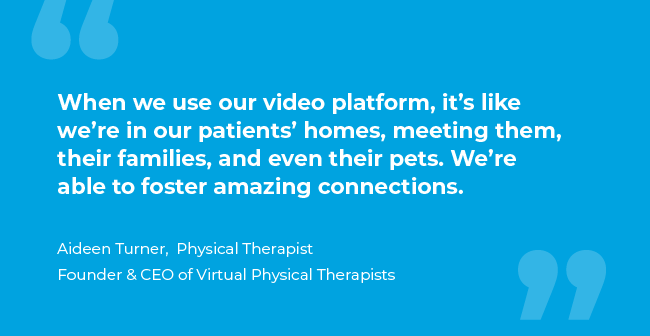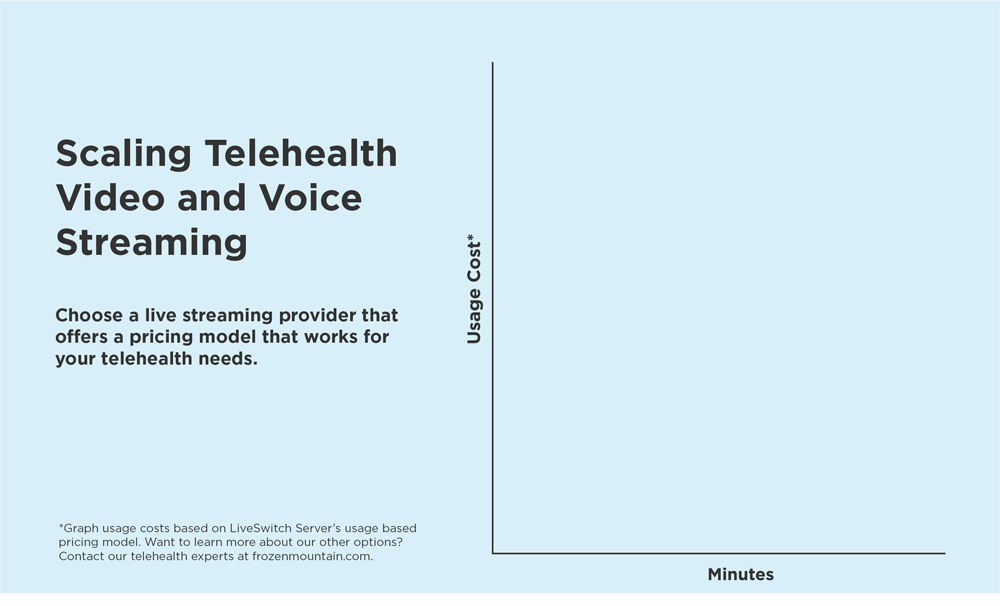Essential Capabilities Every Telehealth Video Application Needs To Have
/LiveSwitch.io%20(v2)%20-%20Solutions/LiveSwitch.io%20(v2)%20-%20By%20Use%20Case/LiveSwitch.io%20(v2)%20-%20Telehealth/ls-solutions-industry-telehealth-thb%20copy.png)
Building a specialized telehealth application with video streaming capabilities can be time-consuming and cost-intensive. The last thing any telehealth developer wants to deliver a sub-par streaming experience to their users - so how do you choose the right live video streaming tools the first time?
Our client, Virtual Physical Therapists, spent months researching the right live video streaming tools for their use case. By taking the time to research, they released a platform that exceeded their users' expectations. As a result, the platform quickly expanded to all 52 states, with over 75 physical therapists serving thousands of patients.
Here’s what they considered:
Criteria #1: HIPAA Compliance
Is the video component HIPAA compliant now, and will it remain compliant?
Among many things, HIPAA regulations require all patient data to be fully encrypted to ensure data privacy and security. By extending this requirement into video conferencing, live video and audio should also be encrypted. Hiring an external developer to fortify a non-compliant application can be expensive, while maintaining that level of security once the platform is released can add unforeseen costs. Because Virtual Physical Therapists understood the challenges facing their in-house team, they chose a live video solution that already offered full video and audio encryption. As a result, they did not need to worry about this aspect of HIPAA compliance.
Criteria #2: Breaking Changes
When browser vendors (i.e. Chrome, Safari) update their software stack, would my development team need to spend hours adapting and solving bugs?
Browser updates are inevitable. When Google pushes updates to Chrome, or Apple releases a new version of Safari, will your video conferencing application break? It can be costly for your in-house development team to debug client-side code themselves. Every second spent fixing bugs is time taken away from developing new features that make your patients happier. Virtual Physical Therapists understood that a live video developer would monitor these browser vendors' early release channels and update their SDKs ahead of any breaking changes. Because of this, they chose a live video streaming SDK that would be maintained and constantly updated.
Criteria #3: Development Support
Can my in-house development team access expert support?
Incorporating live video components into an application can be complex even for the most talented developer. Development teams can find developing for legacy systems and cross-platform compatibility challenging, so Virtual Physical Therapists decided that they wanted a solution that also offered development support. While they developed their video application, they leveraged the great minds at Frozen Mountain to shorten their timeline. When they released their application, they also tapped into the extended support from Frozen Mountain to ensure their application deployed smoothly.
Criteria #4: Video Quality

Can the healthcare professionals on my platform perform accurate evaluations from their devices?
Video quality can make or break any telehealth application. In fact, current criticism(1) about telehealth occasionally revolves around the accuracy of video-based diagnoses. In some cases, patients and doctors have yet to switch to telehealth due to previous poor video conferencing experiences. Knowing the skepticism they faced, Virtual Physical Therapists invested in a video streaming solution capable of rivalling the clarity of in-person visits. Their network of physical therapists could use crystal-clear video and audio to evaluate and assess patients and provide accurate diagnoses on any device from the comfort of their homes.
Criteria #5: Reliability
How well does the live video SDK support connections under all conditions?
Having a live video feed that can perform under all network conditions is important for telehealth. Patients and therapists may join calls from rural communities, and others may not have the latest flagship phone or fast LTE network to handle high-resolution video. Therefore, Virtual Physical Therapists needed a video connection that would still be accessible to patients and doctors no matter where they live, or what devices they use.
Criteria #6: Scalability
Can I scale as my telehealth network grows?
Virtual Physical Therapists had scalability in mind long before they launched their application. Scaling their video streaming platform to reach millions of Americans across all 52 states meant choosing a flexible SDK that encouraged growth. Virtual Physical Therapist chose IceLink to meet their immediate needs, but when they’re ready to scale, LiveSwitch would be there for them, with competitive capabilities that can unlock new business models for practicing physical therapy. Built with similar APIs, their development team would be familiar with the codebase, enabling them to deploy the next generation of their platform seamlessly.

Conclusion
Choosing the right live video streaming component for your telehealth application is no easy task. Like Virtual Physical Therapists, you may spend months researching your criteria and evaluating live video streaming vendors for capabilities such as HIPAA compliance, breaking change support, video quality/reliability and scalability. Want to get off on the right track developing your telehealth application? We’re here to help - talk to our Professional Services team to see how we can help you build your live video platform right the first time.

